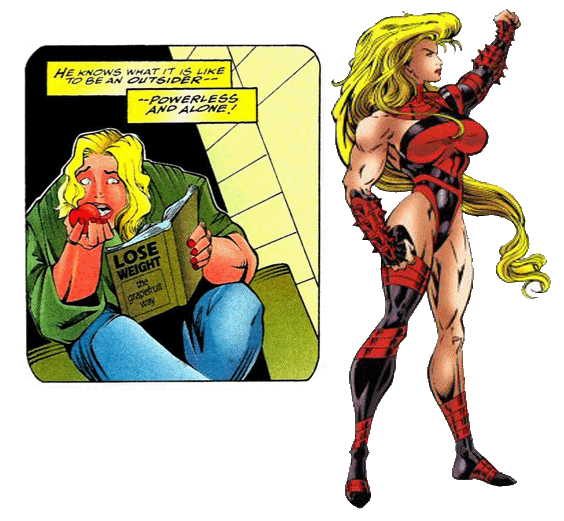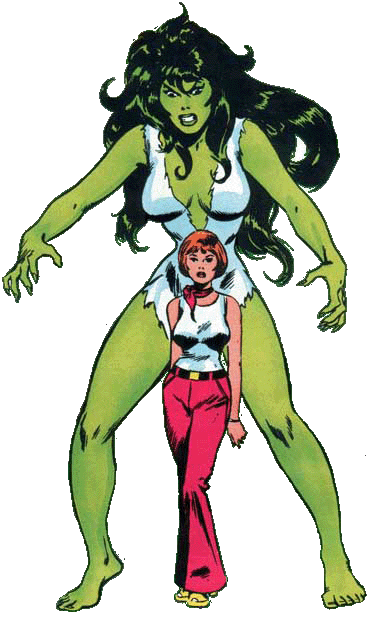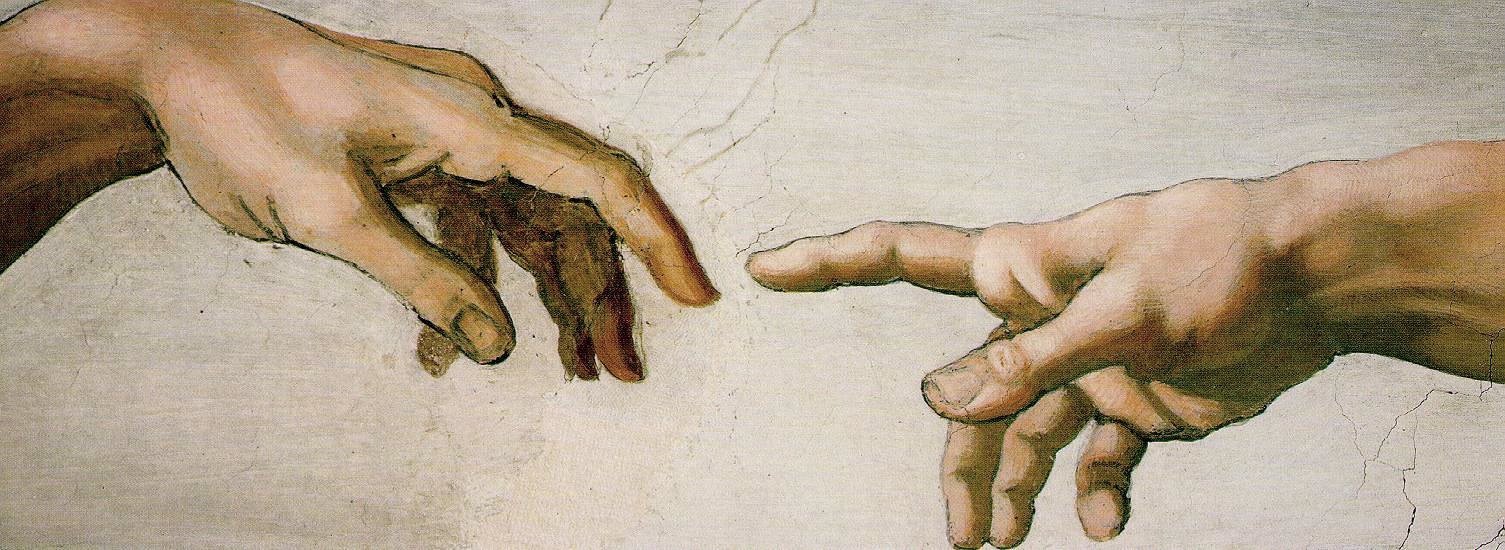It’s been heavily stated that comic books are the last modern vestiges of mythology. While this medium does indeed incorporate and draw from mythological aspects to tell a story and to create characters, it’s not the only field that serves as a wellspring for it to pull from. Psychology plays a tremendous deal in engaging the audience, and in this medium’s creation and constant expansion. In Marvel Comics, as opposed to DC Comics, psychology is often used to humanize characters whose powers and special skills have caused people to both fear and revere them as gods. Tony Stark, a genius-billionaire-philanthropist-playboy who has saved the world hundreds of times over as Iron Man, is a recovering alcoholic. Hank Pym, Marvel’s premier biochemist, suffered a mental breakdown that culminated in him channeling his inner Ike Turner on his then-wife, Janet van Dyne (despite the still-existing controversy of that storyline, plenty of readers believe that Janet’s negative treatment of him warranted his reaction and that his mental breakdown was a plausible excuse).
While the addition of real-world problems and vices into comic book characters makes for an interesting read, so can other ideas from psychology. Just to clarify, I’m not referring to comic creators using this medium as a form of vicarious escape from reality. We all know that most fictional characters are creations spawned from both creativity and psychological coping mechanisms. But suppose you apply psych concepts to a character’s back-history. Several characters, heroes and villains, often gain a superhuman form and powers that are directly and formatively impacted by two things: Their self-concept (the image that we have of ourselves) and their ideal self-image (the image of how we desire to be).
For some mutant characters, the powers they manifest during puberty are greatly shaped by their mental/emotional state at the time of the manifestation. For example, in X-Factor #1 (February 1986), a teenage sailor named Rusty Collins is propositioned by an attractive woman. Naturally, his body temperature rises and he begins to sweat nervously. This extreme nervousness revealed itself when he then became enveloped by an aura of fire, with no harm to himself but severely burning his potential hook-up. But then, there are other characters who more exemplify the notions of self-concept and self-image. Often radiation or technology can cause their psychology to manifest itself physically to one extent or several.
 Stunner
Stunner
First Appearance: Amazing Spider-Man (Vol. 1) #397, January 1995
Angelina Brancale is a morbidly-obese woman with low self-esteem issues since childhood. Despite learning and excelling at quote-unquote ‘lady-like’ activities (cooking and sewing) at the behest of her father, she remained unfilled. Typically, women with low-self esteem feel sad and unloved and consequently develop subservient personalities. They unquestioningly obey anyone who shows them even a remote amount of affection. In Angelina’s case, she became smitten with Dr. Otto Octavius (Doctor Octopus). While Octavius dated and established trust with her, he was actually seeking to use her as an expendable guinea pig for a virtual-reality interface he was developing. It didn’t take much for Angelina to agree to be his test subject. The VR interface was an enormous bit of machinery that Angelina was physically plugged into, designed to support her for extended periods of time with IV supplements for nutrients.
The VR apparatus also contained neural feedback goggles that painfully penetrated the skin around her eyes to connected directly into her cerebral cortex. When activated, the VR interface created an interactive digital body for Angelina, based on her idealized self-image. Months later, Angelina successfully projected her ideal self-image into reality, calling this self ‘Stunner’. As Stunner, she’s a 7-foot-tall, 300-pound Amazonian blonde who possesses superhuman strength, running speed, endurance, leaping ability, and durability. Theoretically, Angelina could operate indefinitely as “Stunner” without exiting the VR interface. Also, the VR interface was originally still unstable, causing the Stunner construct to spontaneously disperse at unexpected times, or if subjected to excess amounts of force.
Basically, she’s projecting her consciousness and sensory input through a construct comprised of solidified binary coding shaped by her self-beliefs. This character fits the stereotypical notion of fat girls wishing they could be skinny or in good physical shape. “Stunner” is everything that Angelina Brancale believes herself to be deep within her massive form. She doesn’t wish to be someone else, only a different version of herself. She once was unhooked from the apparatus for several months, sank into a depression and became employed as a video store clerk. Imagine her elation when the opportunity to become “Stunner” again presented itself. Many sane people look in the mirror and imagine themselves different and improved in some way every day. Virtual reality technology allowed Angelina to make herself over. You can argue that she kind of cheated by doing so. It’s kind of like a personal trainer telling a group of overweight clients that they can become as fit as he is through ‘hard work & exercise’ when, in reality, he owes his shape and figure to the wonders of plastic surgery.
Individuals who gain superhuman attributes via gamma radiation all tend to have a unifying thread: The secondary form(s) created through gamma mutation is governed by the psychology of the subject. Here’s a few:
 Hulk
Hulk
First Appearance: Incredible Hulk (Vol. 1) #1, May 1962
Robert Bruce Banner was born to a loving mother and an abusive alcoholic scientist father. His early childhood and pre-adolescence was rife with psychological and physical abuse at the hands of his unstable father. After witnessing his mother’s death at his father’s hands, young Bruce began to repress his feelings even well into his adult life. His inability to deal with emotions stemmed from a subconscious desire to avoid becoming like his violent father. However, his avoidance of emotion developed into a dissociative identity disorder (aka ‘multiple personality disorder’). This disorder finally began manifesting itself externally after Bruce was exposed to a massive dose of gamma radiation from a bomb of his own devising. Over the years, he has transformed into a wide variety of behemoths collectively known as “The Incredible Hulk”, each with varying levels of physical power.
Each Hulk is a massive physical specimen, possessing Class 75-100 strength, superhuman endurance, nigh-invulnerability backed by hyper-regenerative powers, and the ability to leap up to three miles in one bound. Hulks also have the ability to perceive astral forms, part of a subconscious fear that Bruce Banner has of his father returning to life to torment him. The Hulk also demonstrates a homing ability that allows him to pinpoint the desert in New Mexico where he was first “born”. This ability also gives the Hulk an uncanny accuracy and intuitive sense of direction. The Hulk has an incredible lung capacity, enabling him to last for over an hour without having to take a breath, and some incarnations have even manifested the ability to breathe underwater. Although Banner has many splinter personalities existing solely in his mind, the Hulks that he’s manifested over the years represent the core personalities. Banner excluded, the core personalities also represent repressed aspects of Bruce Banner, sides of himself and even his ideal self. The core personalities that manifest as Hulks have had sufficient real-world experience to allow them to develop as individuals more so than the splinter personalities.
Bruce Banner is the central core identity. He’s meek, mild-mannered, reserved and chock-full of repressed emotions. Despite his insecurities and psychological hang-ups, he is one of the most intelligent men in the Marvel Universe and has been shown to be affectionate with people (and capable of relationships with the opposite sex). He became interested in science at a young age, seemingly preferring the cold rationality of it to protect him from emotions. In many ways, Banner’s childhood abuse molded him into the classic nerd which he became. He views himself as weak and puny, obvious defense mechanisms to keep him from losing control and turning into “an enormous green rage monster”. Since gamma-irradiated humans are molded by their own psychology, Bruce is an interesting case since his own psychology is broken. His own self-loathing (instilled by his father) split his repressed emotional sides into multiple personalities, the gamma rays that turned him into the Hulk(s) put him in a constant state of flux with those different aspects of his psychology jockeying for dominance.
The Grey Hulk was the first Hulk to appear after Banner’s exposure to gamma radiation. Originally, Banner would transform into him only during nightfall. This is because he’s the personality that represents Banner’s repressed libido from his high school/college days, a side of himself that he’s ashamed of. He’s hedonistic, selfish and sarcastic. When he held sway as the dominant personality without having to worry about reverting into Banner, he became a mob enforcer in Las Vegas calling himself “Joe Fixit”. While not as strong as the classic Hulk or even as highly intelligent as Banner, Mr. Fixit possesses a crass sense of humor and has proven to be exceptionally clever and crafty. Basically, Joe Fixit is the teenager-from-Hell that Bruce Banner suppressed and never allowed himself to become.
The green Hulk is the most well-known Hulk. Unofficially known as the “Savage Hulk”, he has the mind of a child and only wants to be left alone. He speaks in the third person and represents the classic “Hulk Smash!!” personality, occasionally referred to as Banner’s child-like id given form, basically his mind from when he first fractured mentally when his father first struck him. The Savage Hulk is unleashed whenever Banner experiences intense stress, panic, anger, etc. Additional anger and stress released gamma-irradiated adrenaline throughout the Savage Hulk’s body, geometrically increasing his strength level to Class 100 and beyond. This also affected his endurance and regeneration, increasing them in the same way (“The madder Hulk gets, the stronger he gets!”). This Hulk would only revert to Bruce Banner when he relaxed to a certain degree, and his anger lessened. As the strongest of the Hulks, his great strength and rage stems from Banner’s abuse as a child. Not taking into account that he’s only a mere facet of Banner, the Savage Hulk (along with Mr. Fixit) view Bruce Banner as puny because of his frailty and inability to fight back against his (or their) abusive father. Even as a child, Banner already had the Savage Hulk in mind literally: A means to have all the strength in the world to both escape and protect himself.
Finally, the merged Hulk (later knows as the Professor). At one point, Banner changed into Joe Fixit at nightfall and during the day would transform into the Savage Hulk when stressed or angered. This chaos was too much for his system, and his personalities began to go to war with one another, mentally and physically. Doc Samson began some emergency psychotherapy for Banner to treat his mental disorder. Using the hypnosis talents of the Ringmaster caused Banner to accept Samson’s presence into the interactions between his personalities and prevent them from attacking each other. During so, Doc Samson forced Banner, Joe Fixit, and the Savage Hulk to confront each other inside their mind for a “group therapy” session. They reached an understanding over the love of their mother, their collective fear of their father, and the recognition that they were tearing Bruce Banner apart by fighting. Finally, Samson seemed to convince the three personalities that it was in their best interests to merge and become a unified, whole mind. This new Merged Hulk was a homogenous mixture of traits. He stood 7’6″ with the Savage Hulk’s body, but Joe Fixit’s facial features. He possessed Banner mind and intelligence (without his emotional issues), but with a large portion of Fixit’s crass humor and personality. He was stronger than any previous Hulk, having a base strength of Class 100 even when perfectly calm. The Merged Hulk could increase his strength in the same manner as the Savage Hulk, but if he ever became too angry or stressed, he would transform into “Savage Banner”: The body of Bruce Banner possessed by the mind of the Savage Hulk. This was his self-imposed defense against him ever losing control and hurting people around him. However, we later learned that this was not, however, the perfect Bruce Banner that he and everyone else thought he was. This merged Hulk is who Bruce Banner wishes he could be.
You cannot become mentally healthy by force of will alone or an overnight cure. When you tell a mentally ill person to imagine what he would be like if he were healthy, what you get is a healthy person as imagined by someone who is mentally ill. While the merged Hulk contained many of the united qualities of the three other personalities, he was really just a stopgap measure devised by Samson. The Hulk was dangerously unstable at that point, and Samson needed to create at least a temporarily stable version of Banner to prevent a total meltdown. So he lied about “curing him” and instead had Banner engineer a new dominant personality that would repress the others until a truly healthy merger could be achieved. That never happened since the merged Hulk realized that he was just another facet of Bruce Banner, a mentally-ill man’s notion of his ideal-self.
 Leader
Leader
First Appearance: Tales to Astonish #62, January 1964
Samuel Sterns was a manual laborer whose mother impressed upon him the notion that he would never measure up to the towering intellect of his older brother, Philip. A high school dropout, he was handling some radioactive materials one day when they exploded and bombarded him with gamma radiation. Recovering in a hospital, he began to read and retain every book and piece of information he found. As his appetite for knowledge became more voracious, his body mutated when his skin turned green and his skull expanded. With his new-found hyper-intelligence, he became a super-villain bent on world domination (go figure). His superhuman intelligence has affected both his logical and intuitive mental capabilities. Like a computer, he is capable of storing large amounts of information in his brain and retrieving any of it on command. He possesses a total recall of everything he has seen or experienced while mutated. The Leader not only stores data, but can connect it in his mind as well, recognizes patterns and connections far faster and at a far more miniscule level than normal people. His intuitive faculties and ability to make leaps of logic have been increased to simplify highly complex scientific situations for his benefit, and enable it so that his guesses are far more probable to be correct than any normal person’s. Samuel Sterns wanted to become smarter than his brother and dispel his mother’s wishes. Well, gamma radiation gave him what he wished for, but he let it sweep him up on a never-ending ego-trip along the way.
 Doc Samson
Doc Samson
First Appearance: Incredible Hulk (Vol. 1) #141, July 1971
Leonard Samson is perhaps Earth’s premier psychiatrist in the Marvel Universe. Born Leonard Skivorski, Jr. into a Jewish family in Oklahoma, his father was a known psychiatrist and a serial philanderer with his female patients. He resented his father’s infidelities, but followed in his professional footsteps nonetheless. To distance himself however, he changed his last name to “Samson” (ironically, his mother used this as a mocking nickname for his father). He worked with Bruce Banner as a psychiatrist and harbored interest in Banner’s transformation into the Hulk. Banner had managed to temporarily cure himself of his conditioning by siphoning a substantial portion of gamma radiation from his being. Samson, motivated by a desire to gain strength and superhuman powers, exposed himself to the siphoned energy. Gaining a muscular Adonis physique with superhuman strength and long green hair, Leonard gained a form that was everything he admired and resented about his father. He’s attractive to women now, has the confidence that comes with a fantastic physical frame and has no shift in personality. But, he remains a professional committed to his field as a medical doctor. When not super-heroing, he provides psychotherapy to superhuman beings. Originally, his strength was in direct proportion to the length of his hair, but that limitation has been rendered moot over the years.
 She-Hulk
She-Hulk
First Appearance: Savage She-Hulk #1, February 1980
Jennifer Walters is the cousin of Bruce Banner. She despite her shyness, she was actually close friends with Bruce while growing up. As an adult, she remained a shy and rather mousy defense attorney.Having a father as a Los Angeles County Sheriff, she was caught in the crossfire of the mob’s vendetta against him. She was near-fatally wounded from several gunshots and would’ve died if not for Bruce, who was in town to pay her a visit. Using his own gamma-irradiated blood for an emergency blood transfusion mutated Jennifer. This gave her the power to mentally trigger a transformation into a gamma mutated form: Taller, green-skinned, more muscular and well-developed, and possessing superhuman Class 75 strength, endurance, durability, recuperation, and a high tolerance for disease, poison, and the effects of radiation. Unlike her cousin, Jennifer is capable of transforming back and forth at will, with no change in personality. One noticeable difference is that Jen prefers being She-Hulk. In that form, her body is strong and Amazonian. She definitely has a massive confidence boost in her gamma form that corresponds with her desired self-image of an ideal woman. Having this power gave form to her desire for physicality, beauty, confidence, and assertiveness combined with her intelligence as a highly-skilled attorney-at-law. Some similarities may be extrapolated between the She-Hulk and Stunner, but the main difference is that one is real while the other is merely a bunch of 0’s and 1’s in solid form.
 Patchwork
Patchwork
First Appearance: Doc Samson #1, January 1996
This is what Buffalo Bill from Silence of the Lambs (1991) would’ve turned out like had he been exposed to gamma radiation. As a child, Kyle Barker was raised by a cruel grandmother who threatened to cut off his fingers when she caught him looking at adult magazines. His traumatic childhood affected his view on the female body. While he was a student at Empire State University, he worked as an imaging intern on a magazine looking to photograph the perfect woman. After an accidental exposure to a gamma particle accelerator, Barker was transformed into monstrous demonic creature calling himself ‘Patchwork’. Gaining superhuman strength, durability and stamina with his troll-like appearance, Patchwork also gained razor sharp teeth and claws. Patchwork has the added ability to steal gamma power, and if he comes into contact with a gamma powered individual, Patchwork can drain them of their strength and power and add it to his own. His form represents his belief in himself. His gamma-mutated form as Patchwork is how he believes women perceive him (thanks Grandma!), similar to the Hulk-forms of Bruce Banner being shaped partly by his belief in his abusive father’s assertion that him being a monster. Becoming Patchwork gave form to his repressed feelings about women. Upon his transformation, Patchwork went on a killing spree and killed five women. He took souvenirs from his victims, namely pieces of their corpses and used them to create a composite corpse by sowing pieces together. Unlike other gamma-mutated villains, Patchwork knew that his killings were wrong, but his urges regarding the opposite sex overwhelmed him. Buffalo Bill and Patchwork both were raised by women in systematically abusive households and both grew up to become serial killers who targeted women to create their bring their own conceptions about women into reality: Bill through his ‘woman’ suit, and Kyle through his urge to create the perfect woman.
You could argue that some other characters (gamma-mutates or otherwise) fit the bill for this essay on self-image, and you’d most likely be right. These are the ones who immediately came to mind because their transformations (even via remote like Stunner’s) not only involve wish-fulfillment and self-loathing, but a sense of narcissism as well. Every character that I described has considerable strength in the body and the mind. Their alter-egos are governed by how the core identity (plural, in Bruce Banner’s case) views itself or by what it wants to be. Did Patchwork want to be a demon? Probably not, but that’s the way Kyle Barker thinks women perceive him. The narcissism in his case factors in when you take into account his superhuman attributes, which allow him to create his perfect woman, however twisted his methodology. Bruce Banner’s behemoth forms are because of his father’s abuse, particularly when he constantly called young Bruce a monster. Yet all of them have strength, and the Merged Hulk is what Banner sees, or wants to see, when he looks in the mirror (but Bruce Banner’s a mentally-ill man, so take that with a grain of salt). Samuel Sterns gained the intellectual prowess that surpassed his brother, and all the vanity and ego that comes with it. Doc Samson grew out of the “nice Jewish doctor who gets pushed around” stereotype into Triple H with long green hair. While one unifying thread is that they’re all green in some way, they’re also all real people, particularly when contrasted with a being like Stunner. She’s more akin to Jeff Fahey’s character in The Lawnmower Man (1992), but in reverse. The other unifying thread that ALL of them share is something that most people, including myself, wish could come almost as easily: They get to do what they wished and/or be who they wish, without having had to have really worked at it.
All images courtesy of the Marvel Entertainment Group.


